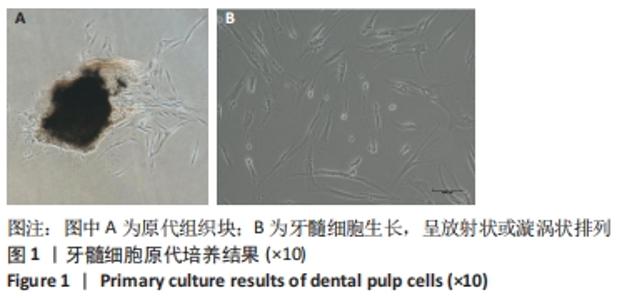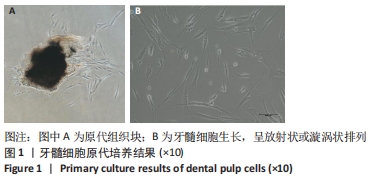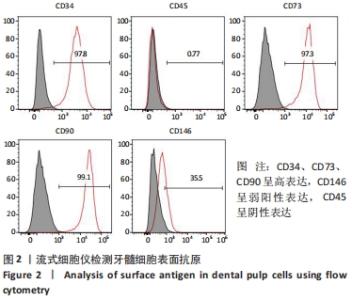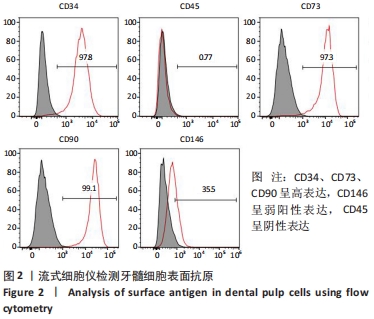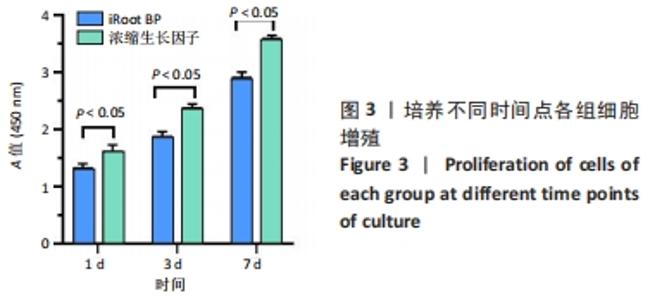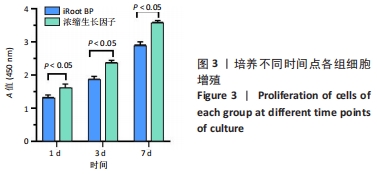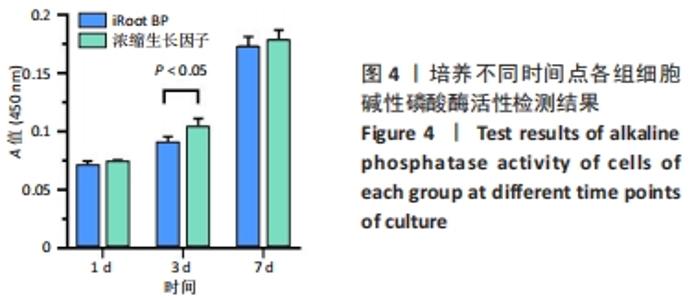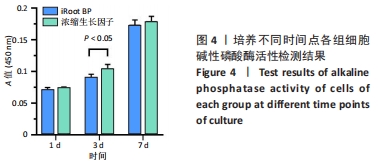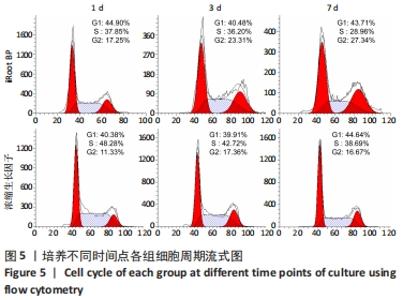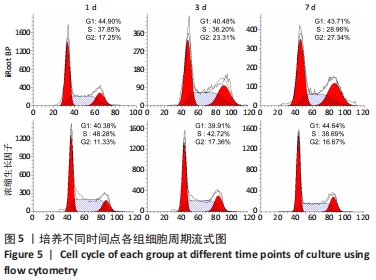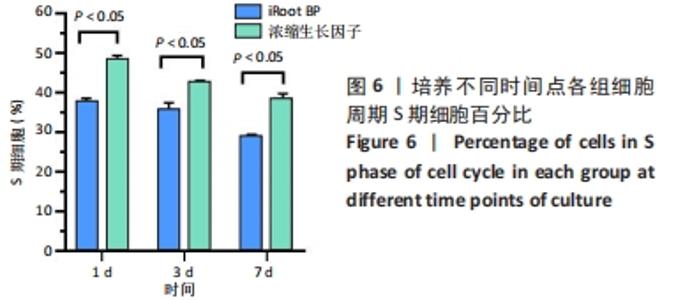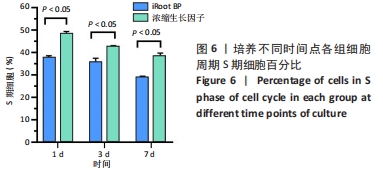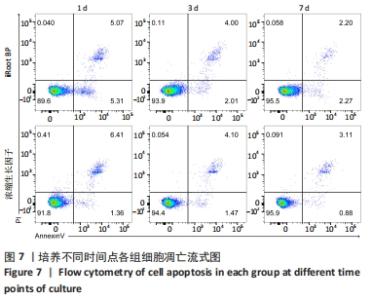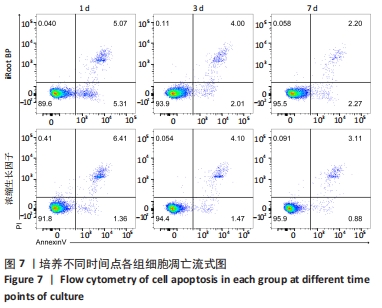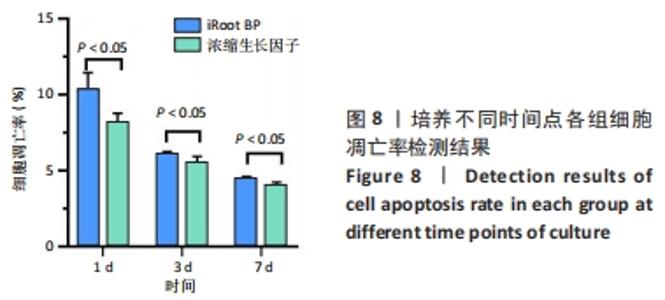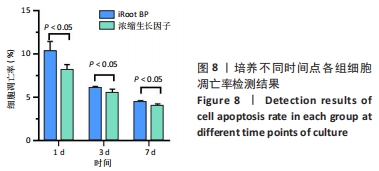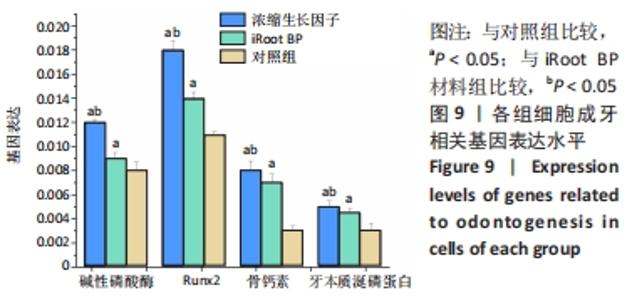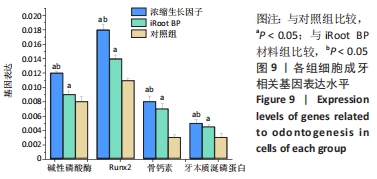[1] ISOBE K, WATANEBE T, KAWABATA H, et al. Mechanical and degradation properties of advanced platelet-rich fibrin (A-PRF), concentrated growth factors (CGF), and platelet-poor plasma-derived fibrin (PPTF). Int J Implant Dent. 2017;3(1):17.
[2] TAKEDA Y, KATSUTOSHI K, MATSUZAKA K, et al. The Effect of Concentrated Growth Factor on Rat Bone Marrow Cells In Vitro and on Calvarial Bone Healing In Vivo. Int J Oral Maxillofac Implants. 2015; 30(5):1187-1196.
[3] RODELLA L F, FAVERO G, BONINSEGNA R, et al. Growth factors, CD34 positive cells, and fibrin network analysis in concentrated growth factors fraction. Microsc Res Tech. 2011;74(8):772-777.
[4] SHI S, BAO ZF, LIU Y, et al. Comparison of in vivo dental pulp re-sponses to capping with iRoot BP Plus and mineral trioxide aggre-gate. Int Endod J. 2016;49(2):154-160.
[5] 何飞,谭颖徽,张纲.人牙髓干细胞的体外培养和鉴定[J].华西口腔医学杂志,2005,23(1):75-78.
[6] LIU S, WANG S, DONG Y. Evaluation of a Bioceramic as a Pulp Capping Agent In Vitro and In Vivo. J Endod. 2015;41(5):652-657.
[7] 韩永战,汪平,史俊南.活髓保存治疗的生理和病理学基础―牙本质-牙髓复合体的防御和修复再生能力[J].牙体牙髓牙周病学杂志, 2006,16(11):658-661.
[8] OKAMOTO M, TAKAHASHI Y, KOMICHI S, et al. Novel evaluationmethod of dentin repair by direct pulp capping using high-resolution micro-computed tomography. Clin Oral Investig. 2018;22(8):2879-2887.
[9] 梅雪,谢俐萍,金幼虹,等.iRoot BP Plus直接盖髓后比格犬牙髓的反应性变化[J].口腔医学研究,2016,32(12):1234-1239.
[10] 吴剑波,殷丽,耿发云,等. iRoot BP、MTA封闭根管上段在年轻恒牙牙髓血运重建术中的应用价值[J]. 全科口腔医学电子杂志,2019, 6(2):126-127.
[11] MASUKI H, OKUDERA T, WATAN EB ET , et al. Growth factor and pro-inflammatory cytokine contents in platelet-rich plasma (PRP), plasma rich in growth factors (PRGF), advanced platelet-rich fibrin (A-PRF), and concentrated growth factors (CGF). Int Dent J. 2016;2(1):19.
[12] TIAN S, WANG J, DONG F, et al. Concentrated growth factor promotes dental pulp cells proliferation and mineralization and facilitates recovery of dental pulp tissue. Med Sci Monit. 2019;25:10016.
[13] HONG S, LI L, CAI W, et al. The potential application of concentrated growth factor in regenerative endodontics. Int Endod J. 2019;52(5): 646.
[14] ERAMO S, NATALI A, PINNA R, et al. Dental pulp regeneration via cell homing. Int Endod J. 2018;51(4):405-419.
[15] MASUKI H, OKUDERA T, WATANEBE T, et al. Growth factor and pro-inflammatory cytokine contents in platelet-rich plasma (PRP), plasma rich in growth factors (PRGF), advanced platelet-rich fibrin (A-PRF), and concentrated growth factors (CGF). Int Dent J. 2016;2(1):19.
[16] BONAZZA V, HAJISTILLY C, PATEL D, et al. Growth Factors Release From Concentrated Growth Factors: Effect of beta-Tricalcium Phosphate Addition. Craniofac Surg. 2018;29(8):2291-2295.
[17] 宦俊,窦磊,严崎方,等.浓缩生长因子促人脐静脉血管内皮细胞成血管化作用研究[J].华西口腔医学杂志,2018,36(3):247-251.
[18] QIAO J, AN N, OUYANG X. Quantification of growth factors in different platelet concentrates. Platelets. 2017;28(8):774-778.
[19] FAROKHI-SISAKHT F, FARHOUDI M, SADIGH-ETEGHAD S, et al. Cognitive Rehabilitation Improves Ischemic Stroke-Induced Cognitive Impairment: Role of Growth Factors. J Stroke Cerebrovasc Dis. 2019;28(10):104299.
[20] KAO CH. Use of concentrate growth factors gel or membrane in chronic wound healing: Description of 18 cases. Int Wound J. 2020;17(1):158-166.
[21] WANG SZ, CHANG Q, LU J, et al. Growth factors and platelet-rich plasma: promising biological strategies for early intervertebral disc degeneration. Int Orthop. 2015;39(5):927-934.
[22] YAN QF, DOU L, HUAN J, et al. The Effect of Concentrate Growth Factors on the Survival, Proliferation and Differentiation of Human Dental Pulp Cells. Sichuan Da Xue Xue Bao Yi Xue Ban. 2018;49(5):716-719.
[23] ZHAO QM, GAO J, HUANG XX, et al. Concentrated Growth Factors Extracted from Blood Plasma Used to Repair Nasal Septal Mucosal Defect After Rhinoplasty. Aesthetic Plast Surg. 2020;44(2):511-516.
[24] CHEN J, JIANG H. A Comprehensive Review of Concentrated Growth Factors and Their Novel Applications in Facial Reconstructive and Regenerative Medicine. Aesthetic Plast Surg. 2020;44(3):1047-1057.
[25] LIN X, TANG F, JIANG S, et al. A Biomimetic Approach toward Enhancing Angiogenesis: Recombinantly Expressed Domain V of Human Perlecan Is a Bioactive Molecule That Promotes Angiogenesis and Vascularization of Implanted Biomaterials. Adv Sci (Weinh). 2020;7(17):2000900.
[26] CHEN S, GALUSKOVÁ D, KAŇKOVÁ H, et al. Electrospun PCL Fiber Mats Incorporating Multi-Targeted B and Co Co-Doped Bioactive Glass Nanoparticles for Angiogenesis. Materials (Basel). 2020;13(18):4010.
[27] MATLOUB AA, AGLAN HA, MOHAMED EL SOUDA SS, et al. Influence of bioactive sulfated polysaccharide-protein complexes on hepatocarcinogenesis, angiogenesis and immunomodulatory activities. Asian Pac J Trop Med. 2016;9(12):1200-1211.
[28] DURMULAR MC, BALLI U, DEDE FN, et al. Histological Evaluation of the Effect of Concentrated Growth Factor on Bone Healing. Craniofac Surg. 2016;27(6):1494.
[29] HUANG FM, YANG SF, ZHAO JH, et al. Platelet-rich Fibrin Increases Proliferation and Differentiation of Human Dental Pulp Cells. J Endod. 2010;36(10):1628-1632.
[30] ZHANG S, YANG X, FAN M. BioAggregate and iRoot BP Plus optimize the proliferation and mineralization ability of human dental pulp cells. Int Endo J. 2013;46(10):923-929.
|
